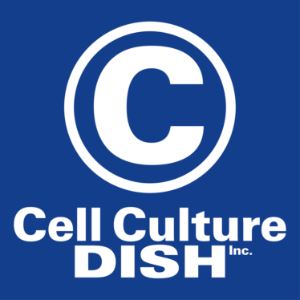
Cell Culture Dish Podcast
Science Podcasts
The Cell Culture Dish (CCD) podcast covers areas important to the research, discovery, development, and manufacture of disease and biologic therapeutics. Key industry coverage areas include: drug discovery and development, stem cell research, cell and gene therapy, recombinant antibodies, vaccines, and emerging therapeutic modalities.
Location:
United States
Genres:
Science Podcasts
Description:
The Cell Culture Dish (CCD) podcast covers areas important to the research, discovery, development, and manufacture of disease and biologic therapeutics. Key industry coverage areas include: drug discovery and development, stem cell research, cell and gene therapy, recombinant antibodies, vaccines, and emerging therapeutic modalities.
Twitter:
@CellCultureDish
Language:
English
Contact:
9704818489
Email:
info@cellculturedish.com
Inside ATLAS – Transforming Surfactant Monitoring in Bioprocessing
Duration:00:29:48
From Storage Tanks to Smart Systems: The Evolution of Buffer Preparation
Duration:00:19:47
Unlocking the Potential of Induced Pluripotent Stem Cells: Innovations, Challenges, and Future Directions
Duration:00:25:37
Accelerating Bioprocess through Digital Transformation: A Strategic Path Forward
Duration:00:38:34
The Key to Biologics Success: Why Developability Assessments Matter in Antibody Discovery
Duration:00:19:24
New Cell Culture Select Tool Simplifies Cell Culture Selection for Researchers
Duration:00:10:57
Revolutionizing Cellular Therapies: How Automation is Transforming the Industry
Duration:00:27:30
Pioneering Access and Innovation: The Future of Cell and Gene Therapies
Duration:00:47:15
How AGC Biologics received approval from both US and European regulators for commercial manufacture of Lenmeldy – A cell-based gene therapy
Duration:00:23:25
How Real Time Titer Measurement And Monitoring Is Advancing Bioproduction Across Multiple Applications
Duration:00:40:53
Advancements in Buffer Management and Single Use Inline Buffer Formulation
Duration:00:15:46
Executing Efficient Scale-up and Large-Scale Viral Vector Manufacturing
Duration:00:17:17
Advancements in Cell and Gene Therapy Stirred-Tank Bioreactor Suspension Culture
Duration:00:08:58
Sangamo’s gene therapy product candidate for Fabry disease shows continued tolerability and promise as an alternative to Enzyme Replacement Therapy
Duration:00:18:15
Single-use Mixers – Ensuring the Customization, Scalability and Supply Required for Success
Duration:00:10:59
New online Gene Therapy Academy offers great resources to support scaling up from lab to production scale
Duration:00:13:59
Increasing Liquid Chromatography Efficiency with Fully-controlled Binary Blending
Duration:00:07:53
Biomanufacturing Quality Management Systems – A holistic approach
Duration:00:10:26
Flexible single-use mixers are key to achieving a next level mixing experience and reducing delivery lead times
Duration:00:16:21
Manufacturing high concentration mAbs challenges and solutions
Duration:00:15:33